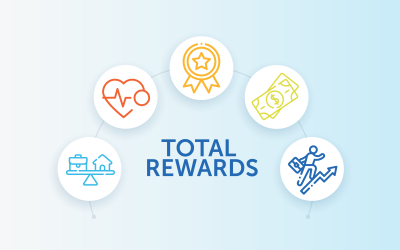How well do you do your job? That’s commonly referred to as performance and it’s subjective – at least, more subjective than productivity. Performance is one of the top three workforce insights ZeroedIn gets asked for, because it’s tied to employee compensation, the biggest investment that companies make. Managing performance so that business gets the best out of employees is a human resources job from a governance perspective. With the right workforce insights, it’s also a chance for HR to contribute to the bottom line.
Performance Used To Be Harder To Measure Than Productivity
As we talked about in our last blog post, productivity is what you do. The amount you produce (hours billed, sales made, products created) has always been pretty easy to quantify. Performance, on the other hand, is how well you do it – a concept that supervisors and co-workers can identify anecdotally but that companies have struggled to quantify. Technology has made measuring performance easier. Metrics are drawn from companies’ internal measurements (usually performance reviews) and compared across time periods. Since many companies in this fast-paced business world are moving away from the annual review and toward more frequent employee feedback, this results in more data.
Measuring Performance At The Individual Level
Good employee performance equates to good customer service and a good quality product. Poor performance creates a lapse in service and quality. Defining “good” and “poor” and the spectrum in between, however, gets tricky. That’s why most businesses have adopted performance reviews with rating scales; it both equalizes and compares employees across the organization. Feedback is based on different criteria depending on the nature of the workplace. It may include factors such as teamwork, communication, quality of work, and attitude, as well as objective factors such as absences and punctuality. ZeroedIn primarily pulls data from a company’s employee reviews, often a five-point scale. These are along the lines of extraordinary performance (5), exceeds expectations (4), meets expectations (3), doesn’t meet expectations (2), non-contributor (0-1). The final score is an average. Employees also provide ratings of their own performances.
Businesses can calculate an employee’s final score by giving more weight to management and/or peer reviews than to the employee’s own review. By also adding in subordinates’ reviews as part of the equation, companies can get a 360° performance picture. But in the end, all of these reviews are subjective based on the rater’s interpretation of performance.
HR Owns Employee Performance
This is where HR comes in. HR is responsible for performance management and can provide governance to calibrate ratings among raters and ultimately increase the accuracy of performance measurement. This is important because HR also manages the compensation process, where employee compensation gets indexed against performance ratings. HR decisions based on performance can lead to employee promotions or to new opportunities with greater responsibilities. Interestingly, while wages and bonuses provide an incentive to employees to increase performance, that’s not the driving factor. Human factors such as the work environment, the nature of a supervisor, and the nature of co-workers play bigger parts in motivating people’s work performance. Recognition and the opportunity for achievement increase job satisfaction, which increases performance.
Workforce Analytics Help HR Focus On The Right Approach
A good thing for HR professionals to know is that, while high productivity contributes more to a business’ bottom line than performance, there are more costs associated with high performance (such as advanced-level training). HR analytics that give insight to employee performance can help you zero in on what’s going on in your particular workplace. Then you can take a targeted approach to improve problems and cut costs. To help your company improve, ZeroedIn adapts to your way of measuring employee performance. We work with your data to find the pertinent information that impacts your specific workforce. Through our process of analysis we provide insight on what it takes to increase workforce performance and get your employees to the next level.
Motivating employee performance with recognition and increased opportunities certainly play a part in reducing employee turnover, our upcoming blog post topic.



